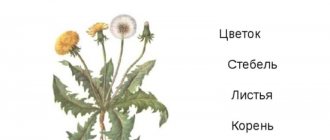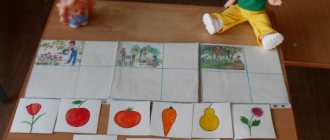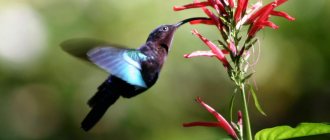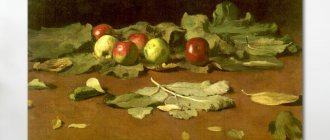- Reports and messages
- Plants
- Spruce
Spruce belongs to the pine family.
This is an evergreen tree, a symbol of the New Year. Spruce can grow up to fifty meters in height and live up to three hundred years. In the USA there is a spruce tree that is eight hundred and fifty-two years old. There are about forty-five varieties of tall spruce trees. Of these, the following can be noted: Eastern European or ordinary, Siberian, Oriental, Korean, Ayak, Tien Shan, Glen spruce, Canadian, red, Serbian, blue.
Low spruces are called dwarf. Dwarf spruces have found wide application in the field of landscape design and are often used in home and interior decoration. There are the following types of dwarf spruce trees: Push spruce, Nidiformis spruce, Nana spruce, Bialobok spruce.
The distribution area of spruce is very large. The common spruce has the largest distribution area: Western Europe, Russia and the Urals. Siberian and Ayan spruce grows in Siberia, and eastern spruce grows in the Caucasus. There are varieties of spruce that grow in certain climates: for example, only on the Kuril Islands, southern Sakhalin and the island of Hokkaido.
Spruce reproduces with the help of heterosexual cones. When the seeds ripen, the cone falls to the ground and is carried away by the wind, sometimes very far. Spruce begins to reproduce after fifteen years of growth.
Spruce is not only an ornamental plant, it is widely used in various fields. Spruce bark, wood, pine needles and cones are used.
Spruce wood is very “musical” and has the ability to “hold” sound. The speed of sound propagation in spruce is fifteen times greater than the propagation of sound in air. Previously, in Rus' they made harps from spruce, but now they make soundboards for cellos, violins and guitars. To do this, choose a tree without curls and knots. Since houses were previously built from spruce, restorers are looking for pieces of spruce in the ruins of old houses that will be used in restoration: it is believed that such spruce has acquired even greater musicality with age. They tried to replace the spruce with another tree, but they did not find a second such “musical” tree.
The second major area of spruce is wood chemical production. Cardboard, paper, cellulose are made from it, and turpentine is obtained. Tannins are obtained from the bark, which are used in industry for tanning leather and in medicine.
Essential fractions and volatile oils are isolated from the needles, which are used in the perfume industry and medicine.
Spruce is widely used in ornamental gardening and park construction. Spruce trees are often planted along roads for protection from the wind. Nuts from the cones serve as food for birds and animals.
In many countries, spruce is decorated for the New Year. In America, the Christmas tree is decorated long before Christmas. They decorate mainly with edible decorations: tangerines, sweets and red and white candies in honor of Jesus Christ.
In Germany, Christmas trees glow and shimmer. They are decorated with balls, garlands, and Santa Claus figurines.
In Finland, trees are protected, so they prefer to decorate artificial Christmas trees with homemade decorations.
In many countries, for the New Year they decorate not a Christmas tree, but other trees: in China - a tangerine or orange tree, in Mexico - a palm tree, in Africa - a baobab tree. Often in Asian countries they dress up not a tree, but a rake in order to “rakes” more wealth in the new year.
image of Eli
Since childhood, at Christmas and New Year, people have become accustomed to smelling fir branches.
Mixing with the smell of tangerines, this fragrant pine aroma was a harbinger of a miracle, gifts, new experiences and the New Year. For many centuries, Spruce has personified the symbol of a new cycle. In ancient times, remaining evergreen, Spruce was an allegory of eternal youth and immortality, longevity and fidelity.
For the same reasons, the Spruce “spruce branches” were and remain in many villages a sign of a bygone life. During the funeral procession, “spruce branches” are thrown at the feet, saying goodbye to the departed. Their age has ended, but has passed into eternity.
In Scandinavia, spruce was used for ritual bonfires. The resinous firewood gave the fire unique strength.
Growing and care
Spruce is a very beautiful tree, both because of the shape of its crown and because of its flowers. In addition, it looks majestic and elegant, the color of its leaves is a rich dark green. Therefore, every year more and more people begin to grow and care for these plants.
Spruce trees like silica and calcareous soils that are kept moist and fertile. The air environment must also be sufficiently humid. The plant can tolerate short-term frosts, but cannot grow in the Arctic with a too cold climate.
In addition to severe frosts, the tree is very sensitive to environmental pollution. For its normal development, it requires deep soils and a humid climate with short and rare droughts. When the tree is young, it is advisable for it to grow in shady places. Seeds can be planted when the soil temperature is at least 4 °C; usually the germination rate is 40%. You can also plant seedlings in open ground. To do this, you first need to grow them at home in large flower pots, which must have drainage holes in the bottom.
It is recommended to water small seedlings every day, but in small quantities. Grown seedlings can be watered abundantly once every three days. You also need to ensure that the air is constantly fresh. When transplanting seedlings into open ground, it is recommended to do the first pruning. This procedure will also need to be done a little later so that the tree grows more luxuriantly. It must be remembered that pruning should not be done when the tree is wet.
There are types of spruce trees that can grow in areas with a fairly cool climate. Regardless of the species, spruce must grow at certain altitudes relative to sea level, usually these altitudes range from 700 to 2000 meters. It is in such zones that the climate is most favorable for the healthy growth of these plants.
The soil itself should not only be deep, but also cool. When growing spruce under artificial conditions, it is necessary to constantly add a large amount of organic fertilizers to the soil. We must not forget about regular, abundant watering, since the soil for spruce must always contain a high percentage of moisture.
The main pests of spruce are mites and red spiders. You can check for their presence by taking a piece of white paper and running it under the leaves. You can also lightly hit the hand with the paper with a branch. In this case, you can see small insects on the paper. If their quantity is insignificant, then no action can be taken, otherwise it is recommended to use an appropriate acaricidal drug. Chemicals should be used as a last resort, since in addition to harmful insects, trees also contain beneficial insects.
All types of spruce are quite hardy and can adapt to different climatic conditions. Although caring for these plants does not involve the implementation of any special measures, general rules should still be followed in order for the plant to be beautiful and healthy. Therefore, it is recommended to communicate with specialists who breed these trees or sell them; they can suggest what conditions are best to create for each specific species in accordance with the climate of the region.
Where does Spruce grow?
Spruce forests are found throughout Russia. These are mostly dense, dense thickets with some undergrowth.
Despite the fact that Spruce develops best in an open area, its shade-tolerant counterparts are found.
The most common type of tree is “Normal Spruce”. It is found in the European part of Russia, Finland and northern Europe. Spruce groves are found in both Siberia and the Urals.
Brothers of the Norway Spruce can be found in the Caucasus and the Far East, on the Kuril Islands and Sakhalin. Even in North America and China, certain species of this thorny, fragrant tree grow.
Deciduous trees
Let's get acquainted with the main types of deciduous trees that are found in cities, forests and parks of our country.
Birch
The most beloved tree in Russia is often called the “tree of life”, “Russian beauty”, “bride”. Birch is easily recognized by its trunk, covered with almost white bark - birch bark. The leaves of the birch are not large, the crown is not too thick, it allows light to pass through, so it is rarely dark in the birch forest.
This tree grows throughout Russia - and not only. Due to its unpretentiousness, birch is found everywhere in the Northern Hemisphere and even beyond the Arctic Circle. Dwarf birch grows in the tundra - less than 1 meter tall.
An ordinary birch grows up to 15 meters and even higher - up to 30. The tree lives for about 100 years.
Birch flowers are called “catkins”; they look more like soft flexible hanging cones than flowers.
Birch is one of the most useful trees growing in our climate. Its leaves contain many healing substances, so they are used both in the form of decoctions and for preparing infusions that help with various diseases and as a general tonic. Birch sap is tasty and healthy. Bath brooms are made from birch branches and leaves, which promote the healing of wounds and abrasions. And even the smell of birch is believed to “heal from the evil eye and bad mood.”
Since ancient times, the top layer of birch bark - birch bark - has been widely used. Since it is resistant to dampness, it was used in construction; and in everyday life they were used to make household utensils. “Birch bark letters”—records made on bark—have survived to this day. They are of great interest primarily for historians involved in the study of Ancient Rus'.
Linden
The ancient Slavs said that the linden tree is “the mother tree: it feeds, puts on shoes, and heals.” But linden grows not only in Russia; it can be found in many European countries, even in the north (Norway, Finland). Although most of all linden loves a warm and fairly humid climate.
This tree can be found both in gardens and parks, as well as in forests and fields.
It is easy to distinguish - by its reddish branches and leaves, which have a characteristic round shape with small teeth. The crown of the linden tree is not as delicate as that of the birch tree; it creates a thick, cool shadow. Linden can reach 30 meters in height.
Linden shows itself most clearly during flowering. At the end of June - July, the entire tree is covered with beautiful light yellow inflorescences, emitting a strong honey aroma. In addition to their beautiful appearance, linden flowers have good disinfectant properties.
But the young plant does not bloom immediately. A linden tree planted artificially begins to bloom only after 30 years; under natural conditions - 10 years earlier. In general, linden lives for quite a long time, up to 400 years, but there are known cases of “long-living trees” that are 1000 years old or even more.
Linden seeds are small, similar to peas, which are collected in several pieces on one stalk equipped with a light “wing”. These wings help the seeds scatter, and the seeds themselves serve as food for birds.
The Slavs have long used linden in a variety of ways: cutlery and dishes were made from the wood, bast shoes were woven from the bark, and linden blossom was used to treat many diseases.
Linden is one of the most useful honey plants; honey is called "Lipets". And the tree itself got its name from its sticky buds and leaves.
Oak
“Oak-giant”, “oak-giant”. It is no coincidence that people and literature associate this tree with strength and power. The oak looks the part: a large, mighty tree with an immense trunk and a rich crown. The tree reaches 40 meters, but does not grow throughout its life: at the age of 100-200 years, growth in height stops. A slight increase in width continues throughout the life of the tree, but it lives for a long time, sometimes up to 2 thousand years!
Oak leaves have a beautiful intricate shape with rounded teeth. The bark is strong and thick, dark in color.
The oak is one of the last to leaf out in the forest - sometimes closer to the beginning of summer. And it blooms immediately. Its flowers are located on long hanging “earrings”.
All children love and know oak fruits. These are acorns - cute oblong nuts hanging on their caps. They can be eaten.
Acorn coffee is a fairly common drink in the world. And in their raw form, pigs and wild boars enjoy eating acorns.
Oak bark, which contains tannins and natural antiseptics, is widely used in medicine.
Oak wood is one of the most sought after and valuable in the world.
Previously, oak was also used in ink production: from the so-called “galls” or “ink nuts” (balls that form on oak leaves due to the interaction of tannins with substances secreted by special larvae living on the tree) paint was extracted, which was included in composition of permanent ink. In Pushkin's time they wrote with exactly this ink.
Maple
When you think of this tree, the first thing that comes to mind is its leaves. They are actually very beautiful - and absolutely original, with five sharp, curly “fingers”. Maple leaves are especially picturesque in the fall, when they turn all shades of yellow and red. And maple seeds look like dragonflies with their transparent, light wings.
The tree itself is quite large, it can grow up to 30 meters in height and up to one and a half meters in diameter. In general, maple grows very quickly.
There are more than 100 species of maple in the world. Norway Maple is the most common species in our country. And in Canada, the maple tree is a national favorite; the leaf design even adorns the national flag. By the way, the Canadian maple lives much longer than “ours”: up to 500 years, whereas in our forests it lives only up to 200.
Maple loves illuminated areas, so there are practically no pure maple forests - the tree grows mainly on the edges. The maple tree blooms in May with medium-sized yellow-green flowers.
Maple syrup is very popular in Canada and North America. It is obtained from tree sap. But there is no point in trying to get it from our maples - it can only be obtained from a special variety. Although our maples also produce juice, it is not as tasty, but it is used in medicine to strengthen the immune system and treat nerves. Maple leaves have antiseptic properties.
Maple is famous for its particularly durable wood, which, among other things, has special acoustic properties, which is why it is used in the manufacture of musical instruments.
Poplar
This tree is a fast-growing tree, therefore it is widely used for landscaping cities.
Everyone is well aware of this slender, tall tree with a thick silvery crown. Poplar bark is also grayish, often covered with cracks.
Although poplar is considered a rather whimsical tree, it grows almost everywhere - in the middle zone, in Siberia, in America, and even in Africa. But poplars do not live too long - the maximum age is about 150 years. Although, like other plants, among poplars there are long-livers, reaching 400 years of age.
Poplar flowering begins quite early, in April or May (depending on the region). The entire tree is covered with long gray-green catkins, which are considered very honey-bearing.
But the most interesting thing comes later, when the poplar fades. Some trees, the so-called females (poplars also have male ones), have flowers that turn into fluffy, cotton-like clusters that scatter in different directions and literally cover everything around with a white carpet. This is poplar fluff.
A beautiful sight, but some people suffer greatly from the fluff - it is believed to provoke allergic reactions. Therefore, now many cities are gradually getting rid of “downy” poplars. According to many scientists, it is completely in vain. After all, poplar is the leader among all trees in its ability to absorb harmful substances and release oxygen. This is precisely the main benefit of poplar. Although in medicine, decoctions from various parts of the plant are also used: bark, seeds and buds.
Poplar wood is not considered very durable, but is widely used for making matches and paper.
Willow
A popular and widespread tree in our country. Most often, when people talk about willow, they mean weeping willow - a tree with long flexible branches inclined to the ground. But in fact, there are many varieties of willow - more than 500 species, growing almost everywhere in the Northern Hemisphere. Rakita, willow, vine - these are all willow trees.
Willow is unpretentious, but most often grows in well-moistened soil.
Among the varieties of willow there are plants with very different properties: tall trees, more than 30 meters, and shrubs and even dwarf willows, not exceeding 3 centimeters in height.
Almost all willows have thin, flexible and brittle branches, but their colors can vary from red to dark green. The buds are also of different colors and shapes.
Many people know that such a popular plant as pussy willow is a type of willow. But the cute fluffy gray balls on the branches are not buds, as one might think, but flowers.
In general, willow is an early plant; buds appear on it in winter, so for many peoples it is a symbol of spring and the awakening of nature.
Interestingly, the weeping willow got its name not only because of its hanging branches: these trees often grow near bodies of water and receive too much moisture through the roots, which it leaves through the leaves; and then it seems that the tree is literally “crying.”
Willow is widely used in folk medicine: its bark contains many unique substances, for example, tannin. The anti-malaria medicine quinine is also obtained from willow.
Wicker furniture and baskets are traditionally made from willow vines.
Aspen
The name of this tree means “trembling man” in Latin. And indeed: even with the slightest breeze, the leaves on the tree begin to move, and it seems that the whole plant is trembling. This is explained by the fact that the leaves are held on the branch by a long and thin stalk, which reacts to any air fluctuations.
In fact, aspen is not such a “delicate” tree. On the contrary, it has such long and powerful roots that some aspen trees are able to survive a fire: even if the trunk and crown are burned, the root system can produce new shoots.
The aspen has a long light trunk. The tree can grow up to 35 meters in height, and quite quickly. On average, a tree lives 100 years.
An interesting property of aspen is that a blue tint appears on the log house. This occurs due to the contact of tannins contained in the wood with the metal of the cutting tool - but it all looks quite ominous, especially against the background of the white trunk. Perhaps this is why aspen does not have a very good “reputation”: in ancient times, people believed that evil spirits lived in aspen groves.
Of course this is not true. Aspen is a useful tree: its wood is considered especially valuable, it is soft, pliable and easily stained, and the bark contains many useful substances, including antibiotics, glycerin, and esters. The first aspirin was obtained from aspen bark.
In addition, the tree looks aesthetically pleasing, it has a slender trunk, neat leaves that look like coins with teeth, and a dense crown. Aspen blooms in April, and the male and female plants have catkins of different colors: males are reddish, females are green.
Chestnut
This tree is especially loved by children for its smooth brown fruits enclosed in a green shell with thorns. At the beginning of autumn they fall, break with a crunch and scatter the ground under the trees.
The plant itself is very decorative: it has a wide dome-shaped crown, carved “finger” leaves with long cuttings, and the chestnut blooms with beautiful inflorescences in the form of candles. Some species have white flowers, while others have reddish flowers.
Due to its attractiveness and undemanding nature in terms of soil and air pollution, chestnut is widely used in cities for the purpose of landscaping streets, squares and parks.
They also like to plant chestnuts in private gardens, but in a small area the roots of the tree can spread up to 6 meters in different directions and interfere with other plants.
This tree is known not only for its beauty. Some chestnut species have edible fruits. And even if they cannot be eaten - such as the horse chestnut, common in Russia - they are widely used in pharmacology and folk medicine.
Edible chestnuts do not grow in Russia - the birthplace of these trees is in Asia, the USA, and the Mediterranean. They are larger than ours (they grow up to 50 meters).
The chestnut tree lives for 150–200 years, but cases have been recorded where individual trees lived to be 2–3 thousand years old.
Ash
The tree, whose height reaches 30 meters, transmits sunlight well, despite the lush crown. This is due to the special shape of ash leaves - they are long and narrow and are held on sparse branches. It is believed that the name of the tree comes precisely from this property - it is always light and clear under it. In addition, the tree emits a pleasant, fresh aroma thanks to the coumarin contained in the bark.
More than 70 varieties of ash are known, growing all over the world: in Europe, North America, North Africa, and the Far East. Common ash has become widespread in Russia. It grows in gardens and parks, but is less common in forests. More often you can see this handsome handsome man in the middle of the field.
Ash blooms in April-May and is considered a good honey plant. The fruits appear in the fall, but can remain on the branches until spring - they are very helpful for birds in winter, since they contain a large amount of nutrients.
The wood of this tree is of the greatest value: it is durable, beautiful in color and has an interesting texture. However, the leaves, fruits, and bark of the tree are also used for medicinal purposes.
Cherry
There are quite a lot of varieties of this plant - more than 130. The cultivated varieties of cherries are well known, but there are also wild species. They are found in the Far East, China, Japan, and the Himalayas. There is also steppe wild cherry, which can be found in Russia. These trees are significantly lower than their cultivated “brothers”.
The Black Sea coast is considered the birthplace of cherries.
Cherry is usually a short tree, no more than 10 meters, trunk diameter is about 40 centimeters. Cherry has a powerful root system and not too dense crown
From an aesthetic point of view, cherries are most attractive in April-May, when they bloom. This tree blooms profusely with beautiful white flowers.
But cherries have gained universal love thanks to their fruits - fragrant, dark red, sweet and sour berries. They appear in June and are not only tasty, but also extremely healthy: they contain vitamins, microelements, and metals.
In the furniture industry, cherry wood is used in the manufacture of expensive furniture.
Interestingly, garden cherries are scientifically called “sour cherries,” regardless of their taste. And sweet cherries (which are a type of cherry) are officially called “bird cherries.”
Garden cherries live for about 100 years, wild cherries - no more than 20.
Japan is very proud of its cherry tree - sakura, which blooms with pink flowers. This type of cherry is not edible, but is so beautiful that in Japan there is a special holiday - Hanami - “sakura viewing”. This event has the status of a national holiday for the Japanese. Moreover, it is customary to admire the blossoms not only during the day, but also in the evenings - at this time the trees are illuminated in a special way.
Geography courses for children 6-13 years old
In the online course “Amazing Planet” we introduce children to the most important places in Russia and the world in a fun format through games, stories and riddles
find out more
What does El look like?
Spruce is a tall, stately tree with a straight, strong trunk and a dense crown. The branches are arranged in a pyramid and have spiny needles. The bark of Spruce is dense and covered with scales.
The height of Spruce can reach 30 meters, while the trunk volume of many species exceeds 1.5 meters
The average lifespan of a tree is 250 – 300 years. There are centenarians up to 600 years old.
After 10–15 years of life, the tree changes its root system, getting rid of the main root. That is why in the forest you can find these wind-fallen giants with their roots turned upside down.
Botanical description [edit | edit code ]
Evergreen trees. The root system is taproot for the first 10-15 years, then superficial (the main root dies). The tree is weakly wind-resistant, often windy.
The crown is broadly conical or spire-like (pyramidal).
The branches are whorled, horizontally spread or drooping. In the first three to four years it does not produce lateral shoots.
The bark is gray to reddish-brown, thin and scaly, sometimes with resinous blisters (eg Picea engelmannii), becoming relatively thick and furrowed over time.
The leaves are needle-shaped (needles), green, short, tetrahedral, less often flat, hard and sharp, sometimes with the abaxial side facing upward, with two carinae on the upper and lower sides. Arranged spirally, singly, sitting on leaf pads. They remain on shoots for several (six or more) years. Up to one-seventh of the needles fall annually. After severe eating of the needles by some insects, for example, the nun butterfly, brush shoots appear - with very short and stiff needles, reminiscent of brushes in appearance.
Read also: What happens if you sprinkle salt on a snail?
Gymnosperm plants. The ovules are not enclosed in the ovary; they develop on fertile (seed) scales that form cones; microsporophylls are collected in male cones, carrying two to four microsporangia with pollen on the lower surface.
Female strobili develop at the ends of branches, forming small cones, which, after pollination (by the wind), grow and become pendulous.
Male strobili form small catkins, consisting of many stamens with elongated, longitudinally opening bilocular anthers, located in the axils of the needles at the ends of the branches of the previous year. They dust in May.
The cones are oblong-cylindrical, pointed, do not crumble, and fall off whole when the seeds ripen in the first year of fertilization. Mature cones are hanging, dry, leathery or woody, up to 15 cm long, 3-4 cm in diameter. The cones consist of an axis on which numerous covering scales are located, and in their axils there are seed scales, on the upper surface of which 2 ovules usually develop , equipped with a so-called false wing. The seeds ripen in October and are dispersed by the wind. They do not lose germination for 8-10 years.
The beginning of fruiting is from 10 to 60 years (depending on growing conditions).
Lives on average up to 250-300 years (sometimes up to 600).
Pure spruce forests are very dense, dense, and dark. There is often no undergrowth in spruce forests. Spruce trees are light-loving trees and achieve their best development in full sunlight, but nevertheless, many of their species are quite shade-tolerant not only in young but also in adulthood. Young spruce of some species are even shade-loving, for example, the undergrowth of Eastern spruce.
Medicinal properties of Spruce
Fir cones, pine needles and resin are used for medicinal purposes.
The needles contain bactericidal substances, amino acids, chlorophyll, vitamins and phytoncides. Spruce needles are rich in vitamin C, the concentration of which increases in winter, therefore, since ancient times, pine “tea” has been an excellent remedy for scurvy and at the same time strengthened the entire body.
Daily consumption of 3–4 spruce needles for a month can restore immunity and increase resistance to a number of viral diseases.
Several spruce branches placed in a vase in a room can kill harmful bacteria in the room, leaving a pleasant aroma in the air.
Fir cones are rich in tannins and essential oils. They also contain copper, manganese, aluminum, and iron.
Essential oils are used in the fight against acute respiratory infections and diseases of the upper respiratory tract.
Syrup from the buds of Spruce is prescribed for microinfarctions.
A decoction of pine needles is used by inhalation to treat sore throat and sinusitis.
Spruce resin or resin has antiseptic properties and can be used in ointments to heal wounds and ulcers.
What types of trees are there?
There are two types of trees: deciduous and coniferous. It is quite easy to distinguish them by the appearance of their leaves.
In deciduous trees, the leaves are flat plates of different shapes. Most often green. Such trees are also called deciduous because the leaves are not on them all year round: in the fall they lose color and fall off. In winter, the tree has no cover, and new leaves grow from the buds only in the spring.
In coniferous trees, leaves (yes, they are also called leaves) grow in the form of thin needles, needles. Coniferous trees are called evergreen because their needles do not lose color in the fall, and they do not fly off by winter. At the same time, one should not think that the needles do not change throughout the life of the plant - coniferous trees also change their cover, but this happens gradually, not simultaneously for all leaves (needles) and without reference to a certain time of year.
Applications of Spruce
Spruce wood is the most common material for construction and fuel. The wood is also used to make paper.
Spruce wood is very soft and straight-grained. Despite its widespread use in construction, untreated wood is short-lived and quickly rots. That is why spruce wood is treated with antiseptics and mordants.
At the same time, Spruce wood is included in many modern materials, such as fiberboard, chipboard, laminated veneer lumber and others.
The musical properties of spruce wood have been noticed for a long time, so soundboards, bodies and other parts of musical instruments are made from this fragrant wood.
Taxonomy [edit | edit code ]
Picea
A.Dietr. Fl. Berlin 1(2): 794. 1824.
syn. Veitchia Lindl. The Gardeners' Chronicle & Agricultural Gazette 1861: 265. nom. rej. against Veitchia H.Wendl., 1868 Flora Vitiensis 270. 1868. nom. cons.
Rod El
is part of the Pine family (
Pinaceae
) of the order Pine (
Pinales
) [9].
| Types [edit | edit code ] Genus Spruce , according to the Royal Botanic Gardens, Kew, includes 37 primary species and 4 hybridogenic ones [10] [11]: | ||||||
Origin of conifers
Conifers or pinopsids are the oldest group of gymnosperms. Their first representatives grew in the northern latitudes of the planet 370 million years ago. This was the age of dinosaurs, the late Carboniferous period of the Paleozoic era. Later, it was these representatives of the flora that played the main role in increasing the cover of vegetation in the northern hemisphere.
Around 185-66 million years ago, pinopsids occupied large areas and were highly diverse. This period can be considered the starting point for modern conifers.
Approximately 66-2.5 million years ago, the oldest species could be found everywhere, including Antarctica and Greenland, beyond the tree line.
Interesting fact : conifers hold the following plant world records. The maximum height is evergreen sequoia (115.2 m), crown thickness is Mexican taxodium (11.42 m in diameter), age is long-lived pine (4700 years).
Types of coniferous trees
Types of coniferous trees
Types of coniferous trees
Types of coniferous trees
Types of coniferous trees
Conifers differ in size, crown shape, color and configuration of needles and cones. Among them there are towering giants and compact small trees.
Main types of conifers:
- Pinaceae are the most common family of conifers. Some of its representatives climb mountains, others grow beyond the Arctic Circle and even enter the Southern Hemisphere.
- Cypress trees grow in the wild along the edges of rivers and in coastal areas. They tolerate drought and short-term temperature drops to -20 degrees. They are unpretentious in the choice of soil: they can live in calcareous, rocky, and slightly salty soil.
- The yew family, which grows more often in areas with mild temperate or subtropical climates, has 6 genera and more than 30 species.
- Araucarias have three genera and 40 species. A characteristic feature is the fusion of the seed and covering scales and the presence of one ovule.









